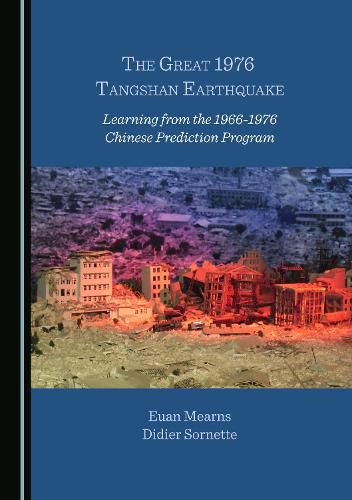Readings Newsletter
Become a Readings Member to make your shopping experience even easier.
Sign in or sign up for free!
You’re not far away from qualifying for FREE standard shipping within Australia
You’ve qualified for FREE standard shipping within Australia
The cart is loading…






From 1966 to 1976, four large earthquakes shook the Bohai Bay rift basin of Northeast China. This prompted the Chinese to launch one of the world’s largest social and science experiments into earthquake prediction that would engage tens of thousands of common people. The climax of this came in February 1975 where a prediction was made hours before the Haicheng earthquake struck. Evacuation of the city of Yingkou and some rural districts saved thousands of lives. The Chinese were jubilant, believing they had cracked the earthquake prediction conundrum. Eighteen months later, however, on the 28th July, 1976, jubilation turned to despair when a great earthquake flattened the large industrial city of Tangshan resulting in 250,000 to 650,000 casualties. This book describes the geological, technical, political and sociological backgrounds to the Haicheng prediction success and the Tangshan prediction failure.Ahead of the Tangshan earthquake, Chinese seismologists had accumulated significant information that suggested an earthquake was imminent and came close to making a prediction. With improved knowledge and vastly improved ability to accumulate, consolidate and analyse data, this book suggests that Tangshan could have been predicted today using techniques developed in China in that epic decade of discovery. Building on these insights, it also offers a viable future pathway towards earthquake predictions that combines the insights and organisation of the 1966-1976 Chinese prediction program with modern technologies, in order to facilitate data gathering, interpretation and sharing.
$9.00 standard shipping within Australia
FREE standard shipping within Australia for orders over $100.00
Express & International shipping calculated at checkout
From 1966 to 1976, four large earthquakes shook the Bohai Bay rift basin of Northeast China. This prompted the Chinese to launch one of the world’s largest social and science experiments into earthquake prediction that would engage tens of thousands of common people. The climax of this came in February 1975 where a prediction was made hours before the Haicheng earthquake struck. Evacuation of the city of Yingkou and some rural districts saved thousands of lives. The Chinese were jubilant, believing they had cracked the earthquake prediction conundrum. Eighteen months later, however, on the 28th July, 1976, jubilation turned to despair when a great earthquake flattened the large industrial city of Tangshan resulting in 250,000 to 650,000 casualties. This book describes the geological, technical, political and sociological backgrounds to the Haicheng prediction success and the Tangshan prediction failure.Ahead of the Tangshan earthquake, Chinese seismologists had accumulated significant information that suggested an earthquake was imminent and came close to making a prediction. With improved knowledge and vastly improved ability to accumulate, consolidate and analyse data, this book suggests that Tangshan could have been predicted today using techniques developed in China in that epic decade of discovery. Building on these insights, it also offers a viable future pathway towards earthquake predictions that combines the insights and organisation of the 1966-1976 Chinese prediction program with modern technologies, in order to facilitate data gathering, interpretation and sharing.